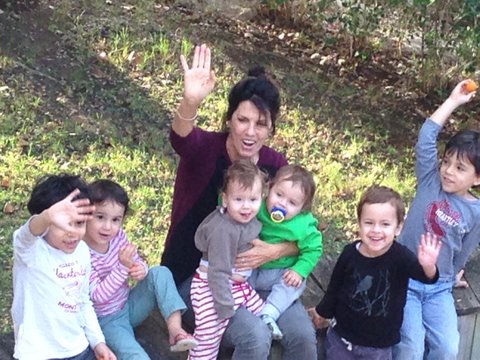
Karl Drerup: The Family History of his Wife Gertrud, née Lifmann© Eva Masthoff with additional information by An Huitzing, Foundation Annemie and Helmuth Wolff, Amsterdam, NL. |
In 1843 Abraham Lifmann (1828-1894) and his brother Levi Lifmann (1827–1897) moved from Dinslaken to Kamen. In 1846 he married Joanna Marcus. They had eight children within a period of 16 years (1847–1863): Eduard, Emilie, Bertha, Joseph, Rosette, Hermann, Jordan and Clara. Having got married quite a few daughters moved to Dinslaken. Bertha stayed in Kamen and married Salomon Stern. Her brothers Joseph and Hermann also stayed in Kamen. In 1860 Abraham’s brother Levi, butcher in Schulstraße 2, married Emilie Marcus (1824–1896),
sister of Johanna Marcus. They had four chil- Joseph and Hermann Lifmann (1856–1935) carried on trading with livestock,
in Weststrasse since 1898. In 1890 Joseph (1851–1920) married Sarah Lifmann.
They had five children: Henny (born 27.05.1891), Walter, Alfred, Ludwig and Gertrud.
Joseph Lifmann’s livestock business flou- Henny had married in Dortmund businessman Richard Floersheim (born 11.05.1891). Ludwig Lifmann (born April 30th, 1897) was married to Claire Feuerstein and lived in Dresden, later on at Breslau. In 1938 Ludwig emigrated to New York together with his wife and son Frank-Joseph Lifmann (born 28.07.1935 in Breslau) where he died in 1947. Henny Floersheim, nèe Lifmann, managed to escape to Valdivia, Chile. In 1975 she said in a letter: „I have many good and beautiful memories of Kamen." Gertrud Lifmann happened to bet he last member of her family to leave Kamen. As a married woman - Drerup - she emigrated to 1937 to New York. Later on she moved to New Hampshire, USA. In 1914 Walter (born 12.09.1892) was killed in action. When Hermann Lifmann died in 1935, the business closed. Not all his brothers and sisters managed to escape persecution. Alfred Lifmann (born 22.08.1895 in Kamen) served an internship at a big store in Hildeshem called 'Meyerhof am Platz'. This store was owned by Alfred's later parents-in-law whose daughter Grete Meyerhof he married in 1921. They had three children: Herbert was born 15.11.1922 and Walter was born 26.10.1923, both in Hildesheim. Alfred and Grete Lifmann left Hildesheim and went to Wilhelmshaven, where Margot was born on the 9th of August 1926. Later on Alfred went to work in several places in Germany, but from 1930 to 1933 the family lived in Düsseldorf. Unfortunately the Nazis wrote about Alfred in the anti-semitic journal 'Der Stürmer' ('The Attacker') - founded by Julius Streicher, "Nazi Germany's leading Jew-baiter" (Robert S. Wistrich: Who's Who in Nazy Germany, Padstow 2002, p. 250). He decided to leave Düsseldorf and went to Amsterdam, where a distant relative found him a job. His wife Grete and the three children stayed in Düsseldorf till the end of the school year. In August 1933 they also moved to Amsterdam, where they quickly accommodated. As being among the very first emigrants, the Dutch received them very well. (This hospitality didn't persist later on.)
On the 20th of June 1943 one of the last big Nazi raids took place: Alfred, Grete and their daughter Margot were arrested and sent to Camp Westerbork.
Their oldest son Herbert - the Zionist in the family - had managed to escape before:The resistance group of Joop Westerweel (a group consisting of
Jews and believing protestants) had taken care of all
the young people who were waiting for their chance to live in Palestine. He brought them to the Pyrenees and they made it on foot to Spain.
After the war Herbert Lifmann found his mother and his sister with the help of 'Aufbau' (German for 'building up ' or 'construction'), a journal for German speaking Jews.
Grete and Margot Lifmann decided also to immigrate to Palestine: Margot came illegally in July 1946, her mother Grete - having two children
there - got a certificate and went legally to Palestine in December 1947.
Marc Albano-Müller can add, as a result of his research, a lot of valuable details:
Margot Lifmann's great-grandmother was Hanna Markus from Schwelm. In the Jewish cemetery of Schwelm you can find the graves of Hanna's mother Regine Markus, née Herz (1779-1874), her older brother Herz Markus (1815-1884) and Hanna's oldest sister Rosa Dahl, née Markus (1816-1877).
In Schwelm you can still visit the house Kirchstraße 10, for decades inhabited - and also probably built - by the family Markus.
|

|
| Despite everything - in the year 2013: Aya Dosh Lifmann, Margot Lifmann's niece and Herbert Lifmann's daughter, with her 6 grandchildren, from left to right: Tamar (7); Ruth (3); the 15 months old twins Ron and Libi; Avri (3) and Dan (5). They are members of the first and the third generation of the Lifmann family who were born in Israel. (Photograph courtesy of Margot Lifmann) |
| Back to Main Page |